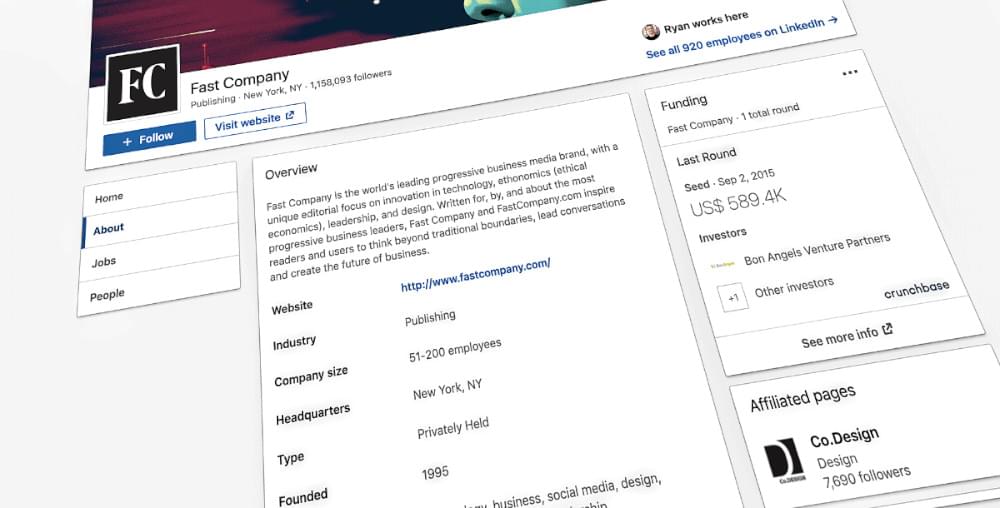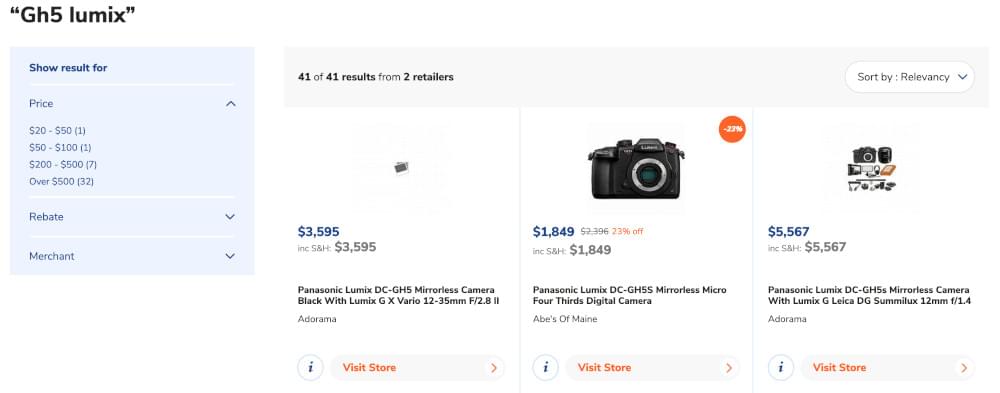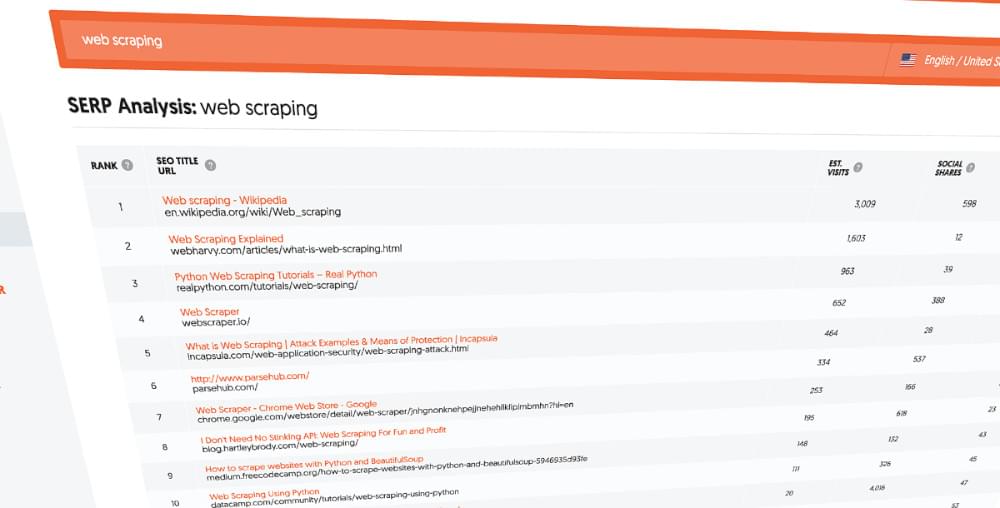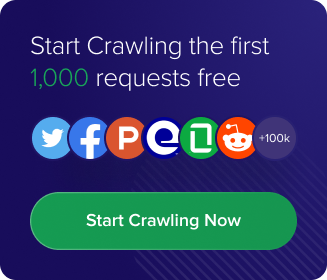Certainly! We’ve explored various aspects of web scraping in numerous articles, and you might be thinking, “Is there more?” The resounding answer is always YES!
Whether it’s about web scraping information or business-related topics, we’re here to discuss and connect the dots. In this article, we’ll examine the prevalent scenarios where businesses find web scraping indispensable. We’ll provide compelling examples that can inspire you to choose Crawling API for your upcoming projects of web scraping for business growth!
What is Web Scraping?
Before getting into the benefits of web scraping for both small and large businesses, it’s important to gain a comprehensive understanding of what web scraping really is.
In simple terms, Web Scraping is a means to extract data from any given website by using specific filters. The said data is then turned into usable data sets that you can analyze and use for business intelligence.
Any modern crawling software can provide automated scraping solutions – letting you scrape thousands, if not millions, of websites simultaneously. Further, most solutions let you define specific scraping rules for one website and multiple websites with a similar content structure.
Businesses heavily depend on web scraping for sales & growth hacking and to consolidate information circulating on the web. This aggregated data is a valuable source for various marketing and sales campaigns. To grasp the essence of web scraping, it’s essential to recognize that modern websites are filled with valuable information. Whether it’s stock prices, product details, sports statistics, or company contacts, you can collect diverse data types by web scraping for business intelligence.
Everything you see on the Web is either data already or can be turned into a data pattern by applying critical thinking. Anything from random blog posts to job listings can provide the necessary intelligence to help your business grow and flourish.
Replace Manual Data Extraction
In the past, if you wanted to save information from websites, the process involved a tedious manual effort of copying and pasting data onto documents. Following the website’s format or copying text made this old method cumbersome and repetitive. Modern-day automated data crawling services have emerged as a solution, addressing common challenges in data mining and web scraping for business intelligence.
Data scraping services designed for the web capture information from websites and transform it into a well-organized set of data, easily usable and analyzable by the organization.
Web scraping tools and services play a crucial role in automating web-based research and information-gathering processes. These tools may store the extracted data in an API or a spreadsheet.
Efficient web scraping for sales & growth hacking with the right tools significantly reduces the workload for your organization’s manpower. Given that data is a vital foundation for sales, marketing, and engagement campaigns, web data scraping becomes an essential field aligned with businesses.
If you have never done any data scraping before, you might be scratching your head and thinking to yourself, “How could a bunch of external data possibly help my business?“.
Everyday Use Cases for Business Growth
Here is a list of common use cases for web scraping services:
- Scrape data from two different websites and compare their similarities. Especially useful for eCommerce stores where you can compare pricing and other data points.
- Create a consistent influx of online reviews left by your customers across a wide range of review platforms.
- Analyze your competition by scraping SEO and Social Media data on a daily basis.
- Generate new leads by acquiring customer information and their contact data using nothing but crawlers.
- Create large sheets of product details from eCommerce platforms like Etsy, Amazon, eBay, and others.
- Strengthen your marketing strategy by gathering large data sets of user feedback on any given subject.
As you can tell, there are a ton of potential benefits of web scraping for sales & growth hackers.

What Are Some of the Distinct Benefits of Web Scraping?
- Data accuracy: If you do all of the scraping yourself, you have a 100% guarantee that the incoming data is gathered in real-time. As a result, you don’t need to worry that some company is giving you years-old data.
- Competitive Edge: You won’t know for sure if your competitors aren’t scraping data themselves, but know that if you do it – you are ahead of every single one of your competitors who aren’t doing it.
- Save time and Money: Gathering business-critical data is a slow, painful, and expensive process if you start it manually. Hiring someone else to do this might incur costs higher than your expectations. Also, you can avoid paying software companies for their tools by pulling in all the data yourself.
- Universal Access: All the data you scrape from the Web can be stored in one centralized location either on your computer or in the cloud. Meaning you have universal access to important data whenever you need it.
How to Grow Your Business With Web Scraping?
And now that we have this out of the way let’s take a look at some of the scraping techniques you can use to gain a business advantage.
Generate Leads Through Contact Lists
Can you utilize Web Scraping to generate new leads? And the answer is, yes, you can. While there are many paid, and some free, alternatives to lead generation, most of these techniques require a lot of manual labour.
So, imagine how much time you could save if you could delegate some of these tasks to automated processes. The answer is – a lot! You can start by creating specific filters for the type of leads you want to generate. So, put together a list of attributes like age, location, education, work position, interests, etc.

Once you have a clearly defined attribute set, you can start scraping sites that match these kinds of signals. For example, you can turn to Facebook, LinkedIn, WordPress Blogs, and other platforms where people might share their personal information. Of course, you have to be cautious so as not to come across as a spammer or someone with ill intentions. Rather, think about how you can use your newly acquired data to offer irresistible incentives.
Price your Products According to the Market Standard
Having access to real-time data of product pricing across hundreds of eCommerce stores can give you an immense edge over your competition. Most professional brands study their competitors closely to keep up with pricing changes and more.
But if there’s one thing we know about pricing monitoring – it’s a helluva lot slower to do it by hand than it is to automate the entire process.

By putting together a list of your product competitors, you can create a real-time scraping module always to keep you updated about prices for the products that your competition is selling. This approach shines through in situations where your competition might run special offers or provide other sales incentives.
Additionally, you can justify your own pricing range by adding additional value to your product. E.g., Include free shipping, provide accessories at no charge, or improve the product itself.
-Who said that web scraping for business intelligence is not a good idea?
Keep Track of Search Engine Rankings
The demand for quality content is at an all-time high, but getting good content in front of the right people is not a simple task. As search engines mature in their capacity to understand content, so does increases the difficulty to get content ranked high on the SERP lists.
Don’t get it wrong either, there are countless SEO tools that offer keyword analysis and more. Though, the issue is often the cost of such tools. For example, popular brands like Ahrefs and SEMRush charge up to $99 per month – which quickly adds up if you are in constant need of such data.

With crawlers and web scraping tools, you can minimize these costs to $0 if you do it smart. Google AdWords provides extensive lists of popular keywords, which means that you can download these lists and use them as input for your scraping operations.
Here are some examples of how you can use web scraping for business growth to track certain SEO statistics:
- Rank tracking: Create a list of keywords that are important to your business, and run the scraper on a daily basis to monitor any significant ranking changes. After a while, you should have sufficient data to build upon your findings and improve your own content.
- Content ideas: Run your keyword lists against Google’s search results to collect a list of new content ideas. Further, you can save specific rankings to see which ideas are most popular.
- Collect URLs for external analysis: Scrape all the associated URLs for your keyword lists, and then use your URL data to check for things like Domain Authority, Social Ranking, and much more.
You can also check the features of any popular SEO software and see if you cannot convert some of those features into dedicated scraping modules!
Analyze Social Media Platforms for Better Outreach
Today, social media can be considered as an online public place where people engage and interact. These platforms have created a virtual community for exploration in marketing and sales. Valuable data, such as customer information and purchasing trends, can be collected from social media, offering a rich source for analysis in sales and marketing campaigns.
Brands are now an integral part of the social media landscape, turning it into a futuristic marketplace where customer insights impact marketing campaigns.
As the largest landscape for web scraping, social media, with its billions of users, presents an unbeatable opportunity. The evolution of social media into diverse channels has broadened the horizon for top-notch web scraping for business intelligence. Virtually every business scale now maintains a social media account, utilizing it as a portal for data extraction for business growth. Social media platforms have witnessed the rise of web scraping for small business aiming to enhance their reach and visibility organically.
Manage Your Company and Brand Repute
Maintaining a positive online reputation is decisive for today’s companies, especially considering every small business engages with an online audience. Data extraction for business growth and online presence can help you in establish and preserve your reputation and identity. These services assist your business in collecting information about what is being discussed and shared about your business, enabling effective reputation management.
With the rise of web scraping for small business, they can now comprehend the needs and expectations of their audience through data sets. The insights collected from this data can be utilized to shape and enhance your online image and reputation. By understanding customer touchpoints through data insights, small businesses can effectively manage their online reputation and devise more successful sales campaigns.
Price and Product Intelligence
Entrepreneurs and businesses often turn to web scraping technology to collect data on competitors’ prices, product availability, and descriptions. This widespread practice serves as a strategic approach to ensuring business growth and continuity by automating pricing strategies and refining market positioning.
An illustration of how our product, Crawling API, is frequently employed in price intelligence encompasses dynamic pricing, revenue optimization, product trend monitoring, and ensuring compliance with brand and MAP (minimum advertised price) guidelines.
Financing and Investing
In financing and investing, making well-informed decisions can be a laborious process. Using web scraping strategically simplifies this undertaking, facilitating decisions grounded in accurate data sourced from the web. It enables the compilation of information from various sources to assess risks and identify opportunities.
Employing web scraping for business growth and financial data allows for the extraction of insights from SEC filings, estimation of company fundamentals, obtaining an overview of public sentiment, and keeping track of relevant news. This method proves instrumental in streamlining the decision-making process in the financial and investment domain.
Final words
As you can tell, Web Scraping has a place and potential for helping your business grow. All you have to do is go through the learning curve of any scraping tool on the market and the rest will be history.
What are you waiting then? Give a try for free with Crawlbase and let the growth of your business go wild!











